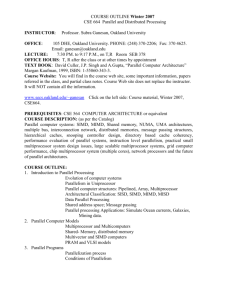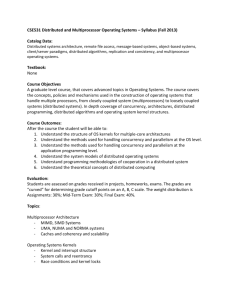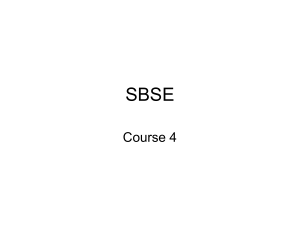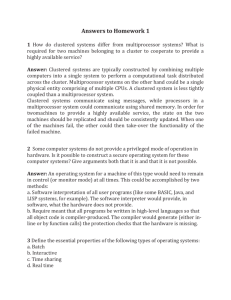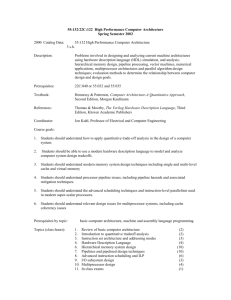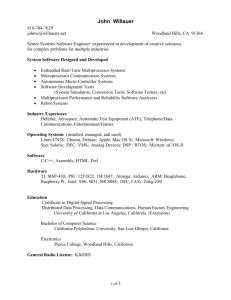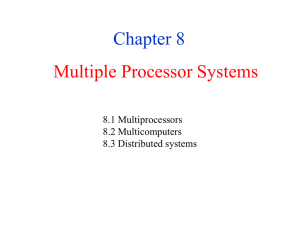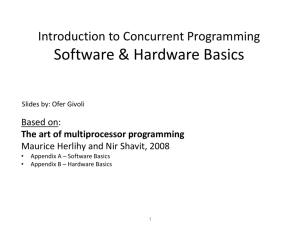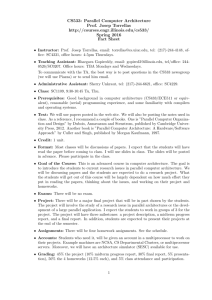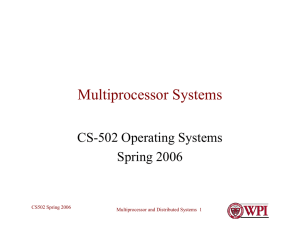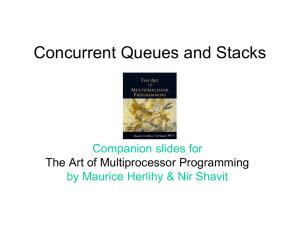Parallel Archi
advertisement
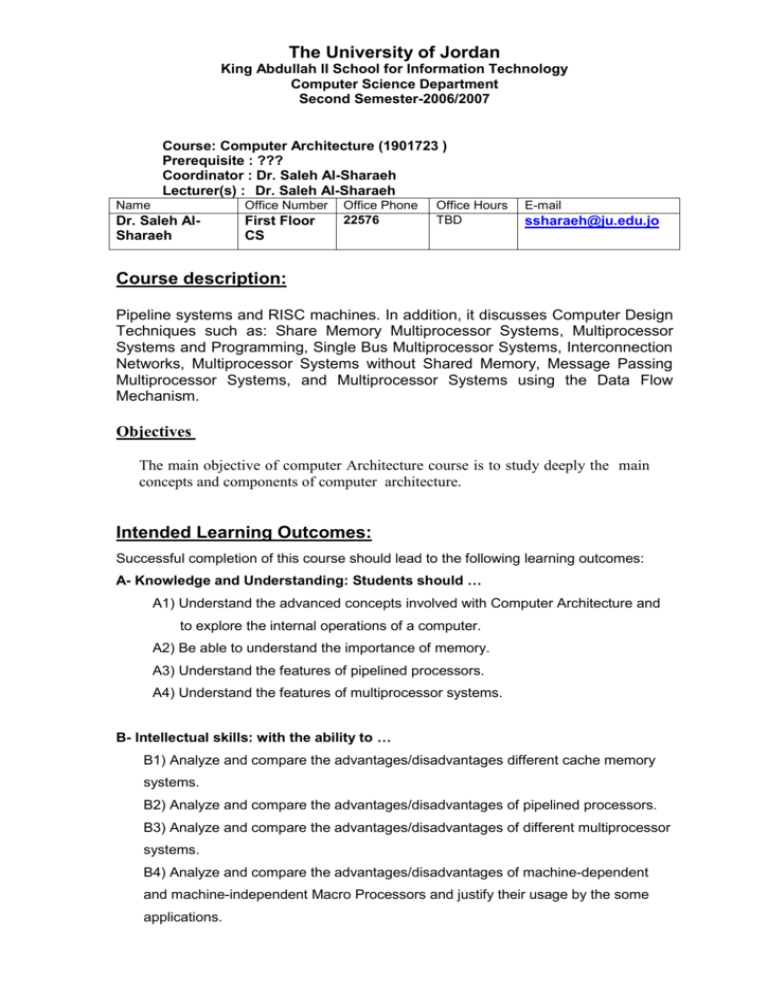
The University of Jordan King Abdullah II School for Information Technology Computer Science Department Second Semester-2006/2007 Course: Computer Architecture (1901723 ) Prerequisite : ??? Coordinator : Dr. Saleh Al-Sharaeh Lecturer(s) : Dr. Saleh Al-Sharaeh Name Office Number Dr. Saleh AlSharaeh First Floor CS Office Phone 22576 Office Hours TBD E-mail ssharaeh@ju.edu.jo Course description: Pipeline systems and RISC machines. In addition, it discusses Computer Design Techniques such as: Share Memory Multiprocessor Systems, Multiprocessor Systems and Programming, Single Bus Multiprocessor Systems, Interconnection Networks, Multiprocessor Systems without Shared Memory, Message Passing Multiprocessor Systems, and Multiprocessor Systems using the Data Flow Mechanism. Objectives The main objective of computer Architecture course is to study deeply the main concepts and components of computer architecture. Intended Learning Outcomes: Successful completion of this course should lead to the following learning outcomes: A- Knowledge and Understanding: Students should … A1) Understand the advanced concepts involved with Computer Architecture and to explore the internal operations of a computer. A2) Be able to understand the importance of memory. A3) Understand the features of pipelined processors. A4) Understand the features of multiprocessor systems. B- Intellectual skills: with the ability to … B1) Analyze and compare the advantages/disadvantages different cache memory systems. B2) Analyze and compare the advantages/disadvantages of pipelined processors. B3) Analyze and compare the advantages/disadvantages of different multiprocessor systems. B4) Analyze and compare the advantages/disadvantages of machine-dependent and machine-independent Macro Processors and justify their usage by the some applications. C- Subject specific skills – with ability to … C1) Write C++ or JAVA programs considering the design of simulation of multiprocessor systems. D- Transferable skills – with ability to D1) Discuss and work in a group in order to design and write the specifications of the several multiprocessor systems. D2) Work in a group in order to implement the designed multiprocessor systems. D3) Work with other groups in order to make different implementations, of the different multiprocessor systems, communicate successfully. D4) Present the final work (project) and make a demo. Course Contents: 1. Introduction to parallel processing. 2. Instruction Set Architecture. 3. Cache memory systems o o o o o o o Cache memory. Cache memory organization. Fetch and write mechanisms. Replacement policy. Cache performance. Second-level caches. Disk caches. 4. Memory management o o o o o Memory hierarchy. Paging. Replacement algorithm. Virtual memory systems with cache memory. Segmentation. 5. Pipelaned processor design o o o o o o o Overlap and pipelining. Instruction overlap and pipelines. Instruction pipeline hazards. Superscalar processor. Interrupt handling. Arithmetic pipelines. Pipelining in vector computers. 6. Multiprocessor systems and programming o o o o o o General. Multiprocessor classification. Array computers. General purpose(MIMD)multiprocessor systems. Potential for increased speed. Programming multiprocessor systems. 7. Bus-based multiprocessor systems o o o o o o o o Sharing a bus Priority mechanisms. Performance of single bus network. System and local buses. Crossbars switch multiprocessor systems. Multiple bus multiprocessor systems. Overlapping connectivity networks. Caches in multiprocessor systems. 8. Interconnection networks o Dynamic interconnection networks. o Static interconnection networks. 9. Message-passing multiprocessor systems o o General. Programming. Message-passing system examples. o 10. Multiprocessor systems using the dataflow mechanism. o o o General. Dataflow computational model. Dataflow systems. Assessment: Projects, assignments, and quizes: Midterm Final Exam: 30% 30% 40% Teahing Methods: Method Learning outcome Assessment Lecture A1 + A2 + B1 + B2 + D1 Exams + Assignments Demo A2 + B2 + D2 Case Study C1 + D1 +D2 Exams + Assignments Project + Presentation Regulations: Every student is expected to completelly adhere to the assignments strict deadlines, absolutelly no exceptions will be given. Text book: Computer Architecture, Barry Wikinson, 2nd Edition, Prentice –Hall, 1996. References: 1) 2) 3) 4) 5) 6) Computer System Architecture, Mano, 1993. Modern Computer Architecture, Rafiquzzaman, 1988. Computer Organization And Architecture, Willian Stallings, 2002. Computer Architecture, Roberts J. Baron, 1992. Computer Archiecture & Organization, Hayes, Mcgraw Hill, 1998. Computer Organization & Design, David A. Patterson, Morgan Kaufmann, 1998. 7) Computer Organization, Carl Hamacher, Mcgraw Hill, 2002. 8) Computer Systems, Architecture, Networks, And Communication, Sebastian Coope, Mcgraw Hill, 2002. 9) Computers From Logic To Architecture, R.D. Dowsing, Mcgraw Hill, 2000. 10) www.cs.iastate.edu/~prabhu/Tutorial/title.html - 11k - Cached - Similar pages 11) www.cag.csail.mit.edu/ - 4k - Cached - Similar pages 12 www.research.ibm.com/compsci/arch/ - 23k - Cached - Similar pages
